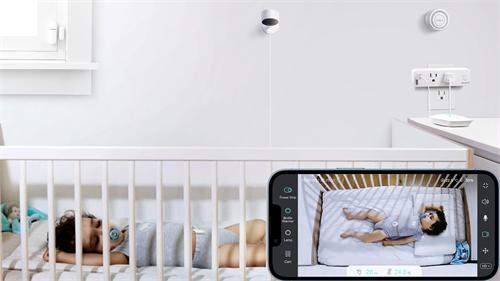Biometric Baby Monitors: Are They Worth the Price?

You don’t really get it until you become a parent—raising a child isn’t just about feeding and changing diapers. Especially when your baby is still little, that constant anxiety of “needing to keep an eye on them at all times” is something only those who’ve been through it truly understand. Many new parents have experienced this: jolting awake in the middle of the night thinking the baby is crying, only to find they’ve just rolled over; or running to check on them halfway through doing chores, worried they’ve fallen off the bed. When you're juggling work and life while constantly worrying about your child’s safety, it’s mentally exhausting.
That’s why more and more young parents are turning to technology to help ease the stress of parenting. After all, with the rapid rise of AI and smart devices, how we raise our kids is being completely redefined. From sharing pre-loved Montessori toys in parenting communities to tracking growth milestones with baby apps, today’s parents aren’t just relying on instinct—they prefer data-driven parenting.
One prime example of this trend is the evolution of baby monitors, especially the rising popularity of biometric baby monitors, which have become a hot topic among tech-savvy parents.
What Exactly Is a Biometric Baby Monitor?
In simple terms, it’s a “smart” baby monitor. Unlike traditional security cameras, these aren’t just about recording video. Higher-end models can monitor your baby’s heart rate, breathing, temperature, and blood oxygen levels through wearable sensors. They analyze your baby’s sleep quality, detect if the mouth or nose is covered, and even play soothing music automatically if the baby starts crying.
It all sounds pretty high-tech, and for many first-time parents, it’s a huge relief. Instead of getting up multiple times a night to check on the baby, you can just glance at the app to see breathing patterns and movement data, and go back to sleep with peace of mind.
Some models even track temperature and humidity levels in the room, alerting you if things are outside the optimal range—creating a safer, more comfortable environment for your little one.
Are They Actually Helpful—Or Just Overpriced Hype?
The answer depends on your expectations.
On the positive side, many parents report significantly better sleep and less anxiety after using AI-powered monitors. Features like “virtual fences,” no-red-light night vision, and enhanced privacy settings are especially appreciated—they’re baby-friendly and parent-approved.
But there are also critics. Wearable monitors (like smart socks and sensor onesies) have come under scrutiny from medical professionals and researchers. These devices often lack medical-grade accuracy, and might give false alerts. For example, a temporary dip in oxygen in a perfectly healthy baby could be flagged as a danger, potentially leading to unnecessary stress or medical overreaction.
There’s also the question of algorithm reliability in everyday environments. Studies show some monitors have a 92% detection accuracy rate in labs—but that number often drops in real home settings, where background noise and other variables interfere with cry detection.
So no, these gadgets aren’t miracle workers. They’re best seen as helpful tools, not substitutes for medical advice or your own instincts.
Is the Price Justified?
Prices vary widely depending on the model and features:
- Entry-level models (e.g., Chillax Giraffe Cam Pro) start around \$150, offering basic video, cry detection, and app connectivity.
- Mid-range monitors (e.g., Maxi-Cosi See) range from \$200–300, with extras like night vision, voice control, and soothing features.
- High-end biometric monitors (e.g., Nanit Pro, Elora AI) can cost \$400 or more, and often require subscription fees to unlock features like sleep analytics, cloud storage, or expert support.
To some, that sounds pricey. But if you were planning to buy a camera, thermometer, sound machine, and motion detector separately, a smart all-in-one monitor may actually be more cost-effective—not to mention easier to use and better for data integration.
Of course, if all you want is to make sure your baby’s still in bed and hasn’t rolled over, a basic cam and a white noise machine might do the trick. But for those really struggling with the anxiety of “what if something happens,” the peace of mind a high-tech monitor offers might very well be worth the investment.
Tech-Parenting Is a Choice—But Don't Forget the Power of Presence
At the end of the day, raising a child isn’t something technology can do for you. No matter how smart the monitor is, the most important part of parenting is the real connection between you and your child. Holding them close, looking into their eyes, playing together—these simple, heartfelt moments are irreplaceable.
Technology can help you watch over your baby at night, but the real sense of security comes from being there with them—right now, in the moment.







